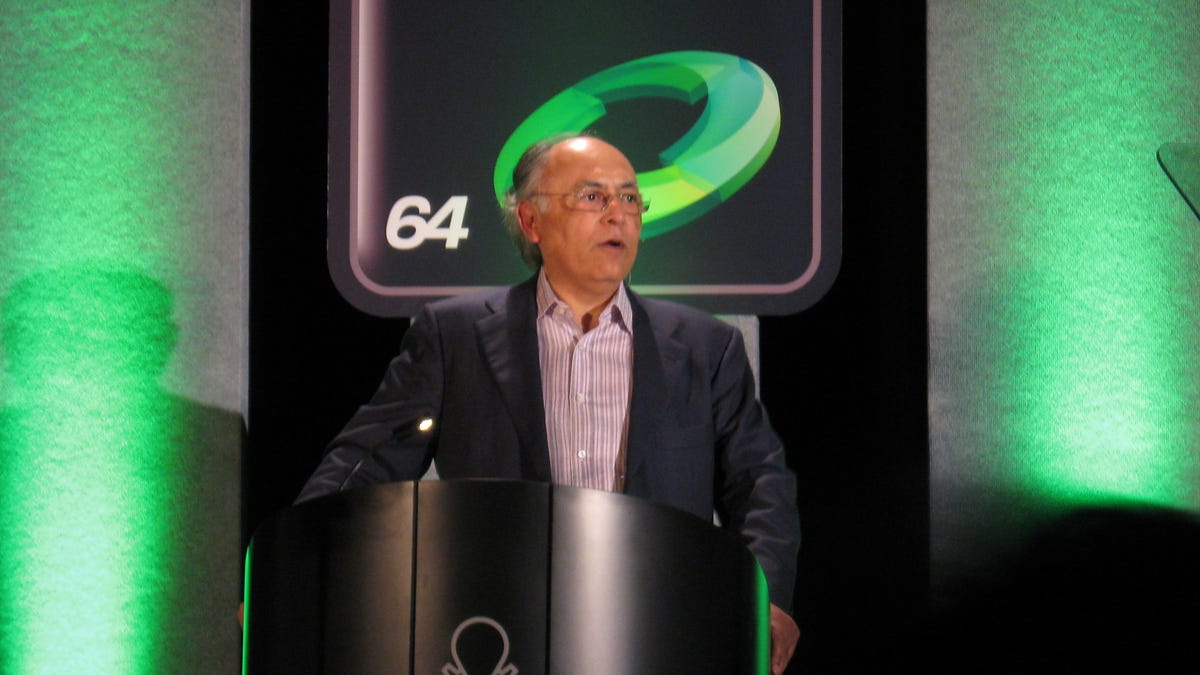Barcelona is finally here, as AMD parties in San Francisco
Company reveals a new performance tidbit, missing from initial materials, as formal launch party for Barcelona gets under way.

AMD's Barcelona party kicked off Monday night in San Francisco, and the relief was palpable on many faces.
The company formally unveiled Barcelona, AMD's first quad-core server processor, during an event spread over two buildings in San Francisco's Presidio district. The Presidio was once an army base when it made sense to guard the Golden Gate with cannons. AMD executives, employees and partners seem ready to emerge from their bunkers after months hunkered down waiting for cover.
Barcelona gives AMD that cover. "Barcelona was designed to win in four key areas: performance, investment protection, virtualization and energy efficiency," said CEO Hector Ruiz while onstage at the Letterman Digital Arts Theater inside LucasFilm's facilities.
The chip isn't quite the breakthrough in performance in its current incarnation that AMD was hoping for, as we covered earlier this week. But AMD shared some new performance data Monday night that it chose not to include in its initial launch materials.
One thing we noticed that was conspicuously missing from AMD's launch materials were scores for Specint_rate2006, an important measure of performance that corporations use to judge processor performance for transactional types of workloads such as e-mail servers or databases. A little extrapolation revealed that AMD trailed Intel's chips by a fair amount in this category, which appeared to take a bit of the shine off AMD's launch.
But the company had a new PowerPoint slide Monday night that addressed Specint_rate2006 performance, and it's all about the compiler. That's the piece of software that translates application code into the machine language used by processors.
Using the GCC compiler developed by the Free Software Foundation, which AMD server chief Randy Allen called "the most predominant compiler," AMD said Barcelona beat Intel's Xeon 5345 processor by 9 percent. When Intel's own compiler was used against the PCG compiler, Barcelona trailed the Xeon chip by 5 percent on the SpecINT benchmark.
A few analysts in attendance confirmed that that GCC compiler is widely used, even over Intel's compilers on occasion. Still, AMD didn't provide the actual scores for that benchmark, just the comparison against Intel, so it's unclear what particular tests it was referring to in the slide.
One other advantage this time around, compared with AMD's initial Opteron launch in 2003, was the partners backing the company on stage. VMware CEO Diane Greene joined Ruiz and Allen to tout the performance of Barcelona when it comes to virtualization, which should be a major topic this week with the VMWorld conference in town. Sun Microsystems CEO Jonathan Schwartz talked up his company's partnership with AMD, despite the warming of ties earlier this year between Intel and Sun. And representatives from Dell, Hewlett-Packard and IBM also made appearances during AMD's event.
Right now, Barcelona is a little underwhelming, but the company confirmed a 2.5GHz version is on the way for later this year, which should provide a boost to its performance scores. As the company gets closer to 3GHz, it seems Barcelona really starts to shine. We'll have to see if that translates into the profits AMD desperately needs.